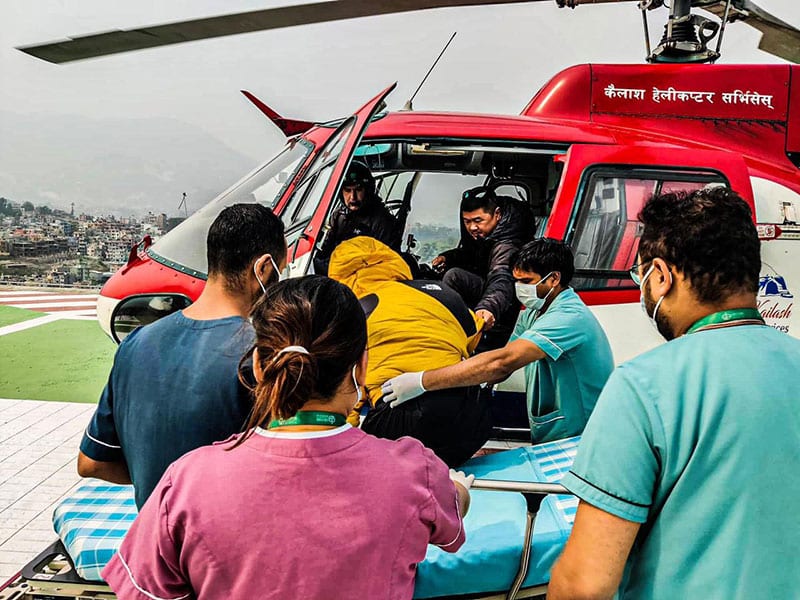Opinion Editorial
High-altitude mountain climbers are in the Himalayas preparing for the 2022 spring climbing season. Whether it’s Mera Peak (21,247 feet/6,476 meters), Annapurna (26,545 feet/8,091 meters), Mount Everest (29,035 feet/8,848) or one of the many others, whenever high-altitude trekkers and mountaineers convene for high-risk, life-changing ascents, I’m part of a medical operations team of experts who deploy to the region to help save lives.
We have boots on the ground to support medical operations, logistical and emotional support. People traveling to the Himalayas to climb and trek are in unfamiliar circumstances, and we can help. I deploy with my team anytime there’s a primary activity area where we have a lot of people, including our members, taking part in extreme activities. We have lots of assistance in wherever we deploy.
COVID’s Impact on Mount Everest
For more than two years, the coronavirus pandemic disrupted international mountaineering, closing or limiting access to popular, challenging mountains worldwide. It’s unclear what COVID-19 or its variants will mean for the 2022 spring climbing season. But experts are making predictions based on their experience and observations.
Legendary high-climber Ed Viesturs says it’ll be interesting to see what countries like Nepal and Pakistan require for entry. “There won’t be any climbing access from the China side. Outfitters will instigate their protocols to protect their clients as well as their business operations,” he said.
“Last year Mount Everest hit record permit numbers but it happened very late,” said Dan Stretch, operations manager for Global Rescue and a veteran of deployments to Nepal during the climbing seasons. “This year, like most things, requirements for high climbs in the Himalayas are still unclear.”
Medical Support Anywhere, Anytime
Providing nonstop, 24/7 medical emergency support for a massive number of people taking part in extreme, high-altitude activities is not for the faint of heart. You need to be flexible and physically fit to be efficient on the ground. Nothing will be spoon-fed to you. Thankfully, over the number of years of having boots on the ground, we have developed close relationships with our partners, both helicopter and hospital providers. They have always been a strong support for the team.

We constantly research the area and the resources available. We stay close to the airport to coordinate and be part of airborne transports. Unexpected weather plays a big role. We make certain to have a plan B that includes a sleeping bag, portable oxygen canisters and other special equipment when we pack, just in case we have to overnight on the mountain at Mount Everest Base Camp (17,598 feet/5,364 meters) to support emergency rescue operations.
My deployment team remains on-site for the duration of the two-month climbing season. The days are long – often lasting up to 16 hours. We are active from sunrise to sundown. If there are no ongoing rescues, that’s when we follow up with people we’ve rescued, check on their care, complete administrative requirements and rest up.
Each deployed team member has at least one day a week to chill out, get a massage, go sightseeing, do anything to rest, recuperate and prepare for the next few days.
This year will be a little different due to the pandemic. The challenge with operating during a pandemic is that the enemy – a disease – is invisible. We have to protect ourselves and be vigilant to protect others. We’ll be wearing masks, avoiding crowds when possible, and we’re all vaccinated.
Stretch predicts that 2022 will be wide open on Mount Everest. “If 2021 is anything to go by, there won’t be any limitations on group size. Expect record permits distributed with no enforced rules. Climbers should go with expedition organizers who take COVID-19 precautions seriously,” he said.
I’m taking it all in stride. We are comfortable in Nepal. It’s like a second home.
